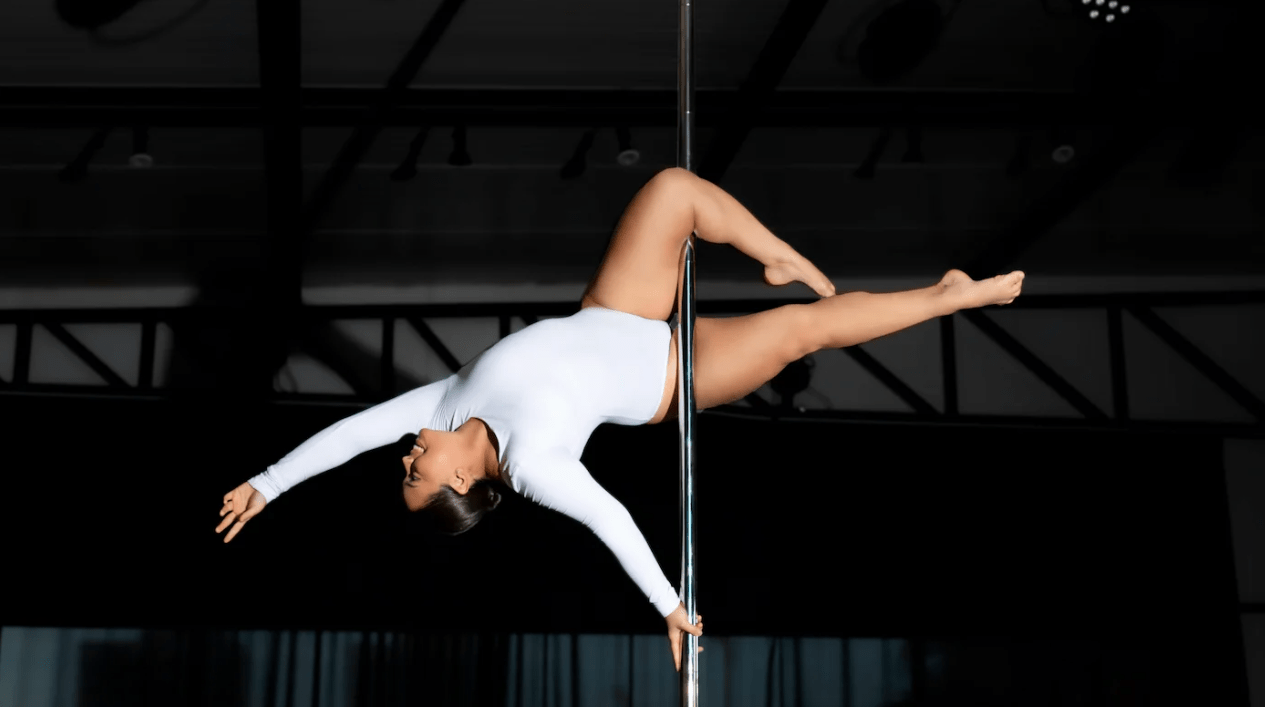Pole dance is an art form that combines fluidity, flexibility, and a strong sense of body awareness.
But don’t be mistaken—or hold yourself back—thinking you need to have all of this before you start. Quite the opposite: these qualities are developed along the way.
It may seem challenging and complex at first, but with practice and dedication, you can master this discipline and enjoy all of its benefits.
If you’re a beginner or aspiring pole dancer, understanding and learning the foundational moves is the very first step! Shall we get started?
Main Moves to Master in Pole to Dance
Check out below a list of the key moves in pole to dance for you to master:
Fireman
The fireman is one of the very first moves learned in pole to dance classes. As the name suggests, it imitates the way firefighters slide down a pole.
This is a basic spin around the pole that helps beginners get familiar with circular movement. It’s especially effective for developing motor coordination, as it requires arm strength while also locking the knees against the pole.
Tips to Master the Fireman:
- Start with static mode: begin practicing the fireman on a static pole before moving on to spin mode.
- Control your speed: use the strength of your arms and legs to regulate the spin.
Posture: keep your shoulders down and chest open. - Leg positioning: make sure your legs are wrapped securely around the pole. Practice the leg placement on the ground first to build familiarity with the movement.
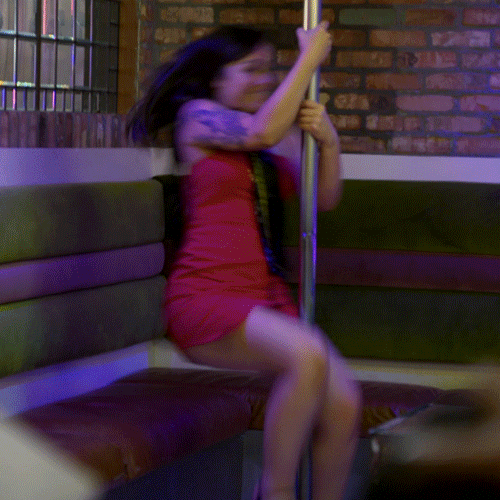
Inversion
The inversion, also known as the inverted position, is the foundation for many moves in pole to dance. Mastering it marks a big step toward the intermediate level.
The inversion involves flipping the body upside down while gripping the pole. From this position, a large number of upside-down moves are performed.
Tips to Master the Inversion:
- Build strength: practice exercises that target your core, arms, and shoulders.
- Take it step by step: once inverted, adjust your legs and body to maintain balance. Using a mirror can help!
- Avoid kicking or jumping: beginners often kick off the floor or jump to get inverted. This creates bad habits that are harder to fix later. Remember, if your goal is to invert from higher up, you won’t have the floor to push off from.
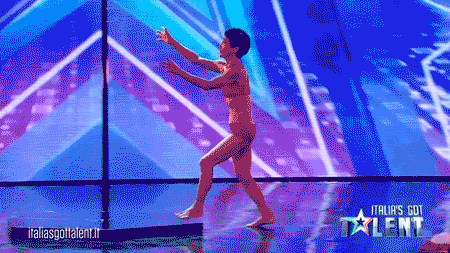
Tanguero
The tanguero, also known as the compass move, is a dynamic transition in pole to dance that involves controlled body rotation around the pole, creating a visual effect similar to tango steps.
It is well-known for its fluidity and the way it highlights body lines during execution. After the tanguero, you can either return to the starting position or transition smoothly into another move to keep the flow going.
This move is often introduced in the very first classes, helping beginners build body awareness while also learning essential pole terms such as “inside leg/hand” and “outside leg/hand.”
Tips to Improve Your Tanguero:
- Leg flexibility: work on stretching your leg muscles to achieve more graceful and fluid extensions.
- Practice control: start slow to understand the mechanics and build confidence.
- Use your outside arm: engage your free arm to give the right impulse during the spin.
- Return to where you started: always think about ending with your outside foot exactly where your inside foot began. Marking a small spot on the floor can help at first.
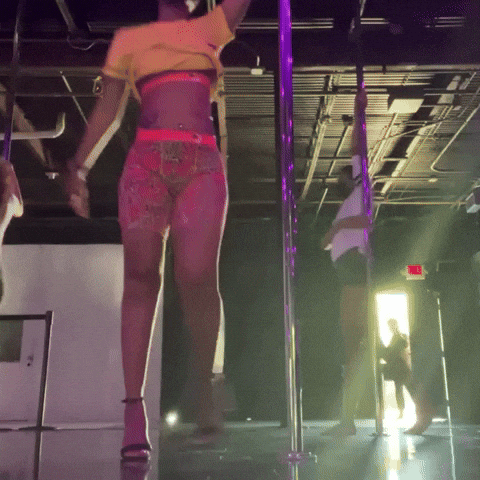
Pole Sit
The pole sit is an essential move in pole to dance that provides the foundation for many other tricks and transitions.
It involves sitting on the pole while using leg strength to hold the position, serving as the base for countless variations and combinations.
With the pole sit, beginners start to understand the balance between different parts of the body and discover the importance of the “thigh grip.” Don’t worry if some bruises appear at first—it’s completely normal! Your body is simply adapting to a new stimulus, and with practice, it will get easier.
Once you’ve mastered the basic sit, you’ll unlock numerous variations such as the extended sit, scissor sit, martini sit, and many others.
Tips to Master the Pole Sit:
- Hip tilt: slightly drop your outside hip toward the floor. This small adjustment helps you find the right grip.
- Grip and pressure: make sure your thighs and feet are pressing firmly against the pole to prevent slipping. Proper pressure distributes body weight evenly and provides stability.
- Find your balance: in the beginning, use your hands to adjust balance and add extra support until you feel confident.
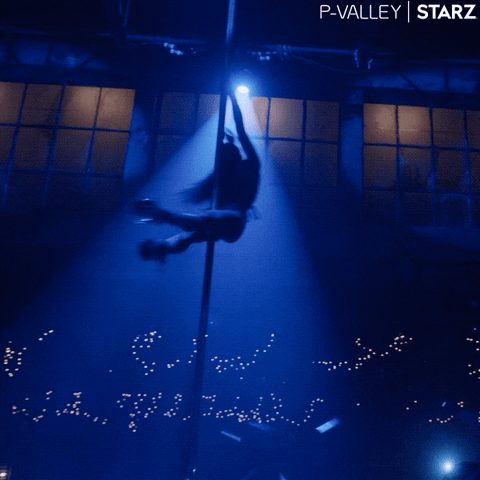
Tabletop
The tabletop is a popular pole to dance move often used in intermediate and advanced transitions. It consists of positioning the body parallel to the floor while seated on the pole.
This pose enhances vertical mobility and works beautifully for performances, drawing the audience’s attention, as well as for photo sessions.

Other Pole to Dance Moves
Beyond the moves we’ve already mentioned, there are many others to explore depending on the desired level of difficulty.
Intermediate Level
Some of the most common intermediate pole to dance moves include:
- Split Inversion: upside down, hands gripping the pole firmly while the legs open into a split.
- Front Split: legs extended in a split while hooked on the pole, supported by strong hand grips.
- Inverted Crucifix: legs locked to the pole, head down, arms extended outward.
Advanced Level
At this stage, pole to dance movements become more challenging, requiring greater strength and control:
- Scorpion: upside down with hands on the pole, one leg hooked while the other bends freely in the air.
- Gemini: upside down with free hands, one leg hooked to the pole and the other extended outward.
- Basic Teddy: torso positioned to the side of the pole, legs open, with the pole resting under the supporting arm.
Master Level
For highly skilled practitioners, master-level moves showcase ultimate strength and artistry:
- Flag Pole: arms extended while holding the pole, suspending the body horizontally in the air.
- Starfish: legs wide apart, body held laterally with only the feet gripping the pole.
- Twisted Handspring Lift: body lifted to a 90º angle, arms extended while holding the pole to support the body midair.
The Journey of Pole to Dance
Mastering pole to dance is a journey that requires dedication, practice, and patience. The basic moves we listed earlier form the foundation for every practitioner.
Pole to dance is also a beautiful path of self-discovery and body awareness. Start slowly, focusing on technique and safety, and with time, you’ll see both your progress and confidence grow. Remember: repetition is key to building stability and control.
The pole itself also plays a crucial role in your practice. Always choose studios equipped with high-quality, safe poles, like those designed by Gaia Pole.
Want to train at home to evolve even faster?
Gaia offers a wide range of poles, all featuring both static and spinning modes. Discover our models and find the perfect fit for your practice:
